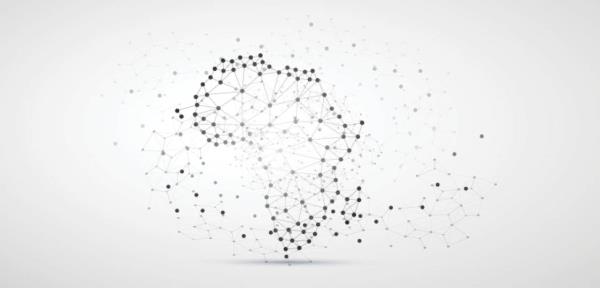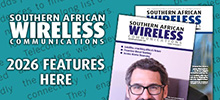09 March 2023

In an increasingly connected world, those regions with connectivity gaps are missing out on significant socioeconomic benefits. Amy Saunders asks, what are the key challenges in bridging the divide?
The digital divide remains a pressing concern across the globe. The chasm between those who are connected and those who are not is staggering, with more than 2.7 billion people - many residing in developing and least developed countries (LDCs) - still offline today. As per the UN, some 60% of the African population is unconnected.
This is a problem because “digital connectivity is not just the glue holding together the economy; it’s crucial to social cohesion too. And that is why commercial viability alone can no longer be the gating criterion for broadband rollout,” explains Jan Liebenberg, customer chief technology officer for Southern Africa, Nokia.
Usage gap tops priorities
Most connected Africans utilise mobile ahead of all other access technologies, primarily due to ease of access, affordability, and electricity requirements. Accordingly, MNOs play a vital role in bridging the digital divide.
“South African MNOs have done a fair bit of work on this, investing in new mobile network infrastructure in underserved and rural areas,” says Keoikantse Marungwana, senior research and consulting manager, telco & IoT lead, sub-Saharan Africa, International Data Corporation (IDC). “They are also offering low-cost data plans and mobile devices to make internet access more affordable for lower-income individuals and households, and introducing different bonus structures on their data plans, and zero-rating access to various online material for education, health, and other multimedia services.”
It seems that solving the usage gap, rather than coverage, is the key to connecting Africa. As per GSMA, 40% of adults in sub-Saharan Africa are connected to the internet via mobile; however, a further 44% reside in areas with mobile broadband network coverage, but do not utilise that coverage – the usage gap. This gap is greatest in eastern Africa at 55%, followed by sub-Saharan Africa at 44%, southern Africa at 41%, western Africa at 41% and central Africa at 33%.
“Mobile data is like bottled water,” states Mark Goosen, sales director sub-Saharan Africa, Cambium Networks. “Great to have wherever you go but expensive if your only option at home is to use it for cooking, bathing, and irrigating your garden. A significant source of digital divide gaps is where mobile service is available but not affordable due to the high cost of the data plans, with no other low-cost options. The cost of prepaid mobile data is around 30 times more than fixed broadband. The result is only 10% of the homes in South Africa have WiFi which also lines up with the wealthiest 10%.”
“A range of issues determine whether you can access, understand, and use the available services,” confirms Liebenberg, referencing the ‘seven fault lines of the digital divide. “These include, but are not limited to, level of income, literacy, gender, ethnicity, age, and physical abilities. It’s worth noting that groups experiencing these issues often face multiple barriers, more than one divide; for example, indigenous communities are more likely to live in remote areas and have lower than average incomes.”
Jordan Cox, GSA research executive, agrees: “barriers still exist and will need to be overcome. Some of these challenges include the high investment in infrastructure to bridge the divide combined with the low ARPU making it not commercially viable, low current coverage, lack of education and skills in the remote areas to implement new technologies,” he says. “Even if new technologies such as satellite and FWA are deployed, many people lack the digital skills to make the most of these networks, resulting in a lack of ROI to providers or a reduction of positive benefits for the end-consumer as just some of the potential outcomes.”
MNOs remain key in addressing the usage gap: “MNOs are partnering with non-profit organizations, government agencies and other ICT stakeholders and ecosystem players to improve digital literacy and skills training to help people in under-served communities access digital services,” explains Marungwana. “Each of the operators have programmes and initiatives across the country on digital skills development.”
We have the technology
A range of technologies are being implemented to increase connectivity since “there is almost no fixed telephony network, so today most Africans in cities are using FWA, or cellular, although fibre-to-the-home is developing very quickly. For rural areas with no access to 3G, TV White Space frequencies could be cost effective versus the connection’s low density,” says Paul-Francois Cattier, managing director, Africa Data Centres Association. “The real question would be the cost for the user and the business model for the operators to cover rural communities.”
FWA, particularly the unlicensed version, can provide cost-effective high-speed internet as an alternative to fibre in suburban or rural areas, shares Marungwana, and can also be used to provide last-mile connectivity to households and businesses in areas where fibre is not yet available.
Goosen asserts that there is no real connectivity gap: “with all the various technologies available today you can get internet access nearly everywhere in Africa. It is really an affordability gap. Fibre, fixed wireless, and WiFi are all helping drive the price down of uncapped data access. WiFi only phones cost less than 10% of mobile enabled devices due to vast economies of scale.”
Liebenberg agrees: “sufficient technologies exist to address the digital divide; however the key is in how to combine the different technologies to allow a viable business case and deliver a sustainable solution. Technologies for consideration include mobile radio and fixed-wireless access technologies (5G, 4G, WiFi), satellite broadband, high altitude platforms (HAPS) and low Earth orbit satellites (LEOs) or Non-Terrestrial Networks (NTN). New HAPS and NTN developments are bringing new concepts and business models in bridging the digital divide. The HAPS and NTN allow infrastructure reuse by default, as these assets move around the globe, they are re-assigned to provide access to the country in view, therefore bringing economy of scale.”
Meanwhile, Marungwana is a strong proponent of satellite for connecting remote and rural regions: “LEO satellites will be gaining momentum soon in South Africa and will also provide a much higher speed
“The affordability gap can be closed, and the total addressable market can be expanded by deploying a range of technology to provide internet service,” says Goosen.
“With the deployment of low-cost technology on their existing tower infrastructure, operators would be able to profitably serve extremely price sensitive customers, thus growing their market. The result would be a sustainable business today that leads to more internet connectivity, more education, more small business, and a more robust economy tomorrow.”
Looking ahead, Cox asserts that “FWA will emerge as a strong player within the African market. According to CCS Insight data, only 1 million consumers are currently subscribed to 5G FWA services across Africa and the Middle East - this is predicted to rise to 6 million by 2026, as more rural areas gain access to the service.”
It starts at the top
Mobile technologies and services contributed 8% of GDP, US$140 billion, across sub-Saharan Africa in 2021. This is expected to grow to US$155 billion by 2025, says the GSMA.
“Since 2010 sub-Saharan African countries are showing fast growing GDP performance. What has been the main driver for this? DFI investment? Governments’ new economy policy? No - it has been private investment by MNOs to establish mobile networks in Africa that had almost no fixed telephony network and offer a first step to solve the digital divide,” says Cattier.
“Some countries are creating rules on pricing and encouraging sharing of infrastructure. A Nokia Bell Labs study shows that a cost benefit of 20-25% can be obtained when towers, backhaul and other ancillary items are shared,” says Liebenberg.
“The continued auctioning of spectrum will allow more MNOs to set up multiple networks across Africa. Four spectrum auctions took place across the continent in 2022 in Nigeria, Tanzania, Zambia and South Africa, with Auctions in Namibia and Zambia already planned for 2023 and beyond, according to GSA data. This is the first step into allowing new networks,” said Cox. “Alongside this, an increase or continued investment into connectivity infrastructure will both encourage MNOs into the market and give them the vital investment needed to successfully set up networks.”
“A new mindset will be required,” opines Goosen. “Licensed spectrum which is used to deliver mobile service is a valuable service but is not affordable for most people. Unlicensed spectrum is already being used in Africa to deliver reliable WiFi service at a tiny fraction of the cost of mobile. Regulators can quickly increase available unlicensed, low-cost spectrum by allocating all of 6GHz to WiFi as the USA and Brazil have done. In addition, making 60GHz PtMP available across Africa will allow local fibre and small fixed wireless operators to quickly and economically expand their networks.”
Governments should also reduce private-investment risks to attract more capital in digital infrastructure investments that serve a public need, says Liebenberg, “and where conditions are not commercially viable, they can provide growth capital on those projects to attract private investors.”
A connected future
The GSMA reports that this year, mobile connections in sub-Saharan Africa are forecast to reach 1 billion, and by 2025, mobile subscriber penetration should reach 50%. MNOs are expected to continue to invest heavily in sub-Saharan Africa for the foreseeable, with more than US$30 billion network capex over 2022-2025.
Cox expects the current rate of spectrum auctions to continue or even increase, encouraging more MNOs into African markets, “however the current economic uncertainty does not help with investment as well as equipment shortages, alongside the strong geopolitical factors that are currently taking place globally, which itself may cause the slowing of decisions or restriction of investment.”
The continued development of rural areas is a key priority. “The digital divide between Africa and the rest of the world will be history in five years,” asserts Cattier, “but the digital divide within Africa will remain until the governments understand the need to develop rural economies.”
Marungwana reports that South Africa’s efforts to expand broadband infrastructure, particularly in rural areas, will continue and accelerate: “I expect us to have at least 90% 4G population coverage, and significant fibre broadband availability in rural areas at affordable rates. Fibre pricing as low as R500 per month for 50Mbps has been available for a couple of years in some villages like in the Northwest and Limpopo, and it is growing.”
“Most African countries have difficulties bringing infrastructure to rural areas, mainly due to the cost to power the infrastructure when there is no access to electricity,” says Cattier. Linking the digital divide and the electricity access divide would help, but it is not the path most governments are following, he says. Developing rural areas economically is necessary to enable entire countries to develop, rather than just the main cities: “to do this you need to develop electricity access, grid expansion, mini grids etc...”
However, Africa’s fixed wireless operators are incredibly innovative and dedicated to sustainably delivering low-cost WiFi to homes and small businesses across the continent, says Goosen. “Multiple pay as you go fibre/WiFi deployments are operating across lower income urban Africa. PayGoZo is a prime example of this type of deployment. Ikeja is another operator that profitably delivers pay-as-you-go service in areas where no one else wants to operate. If regulators free up more spectrum, such as allocation of 6GHz to WiFi, this will offer welcome relief to the congested 5GHz fixed wireless. Any network operator could take advantage of the new spectrum to profitably deliver low-cost broadband and WiFi to millions more people across the continent.”
The future for connectivity in Africa looks bright, even amongst rural areas, however, progress may be gradual. Ultimately, we might envisage within our lifetimes a future where every African has access to connectivity, even in the most remote regions.







